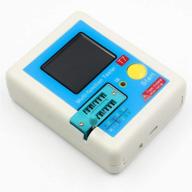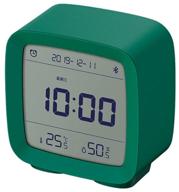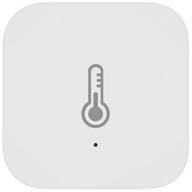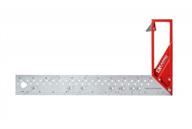
Review on 🌡️ Inkbird ITC-308S Dual Stage Temperature Controller for Grow Room, Fermentation, Brewing and More! by Andargie Marquez

Sensor failed but was replaced under warranty
Original review (March 2019): We have had two aquarium heaters fail in four years. The first just stopped working, which is a preferred disclaimer. However, the second failed, by which I mean it started overheating the tank. And that's after spending extra money on what we think is a good heater. Luckily we caught it before there were any casualties, but we no longer trust a single device to properly heat our tank. And that brings me to an important point regarding the use of this temperature controller: I've read some questionable advice ranging from using two heaters in case one of them fails (effectively doubling the chances of failure due to overheating ) to turn the built-in heater thermostat to maximum and just rely on InkBird to turn it off at the right time. I would argue that for a tropical aquarium in an acceptable indoor environment, neither of these approaches is the safest. Any device can fail, and while it would be nice to think that InkBird is less likely to fail, I'm certainly not sure that's true. And even if that were true, the fact remains that there is a non-zero chance that it could fail. So here's what I would suggest if not heating is less catastrophic than overheating: Set the aquarium heater to the desired temperature of the aquarium (78F in our case). Set InkBird about two degrees higher (80F in our case). Thus, the tank is only heated if both devices agree that it needs to be heated. If the InkBird ever shuts off because it has hit setpoint, it may mean your heater has failed and needs replacing, but the InkBird will not allow it to heat above setpoint. If the InkBird fails but the heater doesn't, the worst it can do is turn off power to the heater when it shouldn't. You need to check it from time to time to make sure InkBird is working properly. If the reading is very different from 78 in our case, we know there is a problem. And we need to find out if the heater or the InkBird has failed, but the bottom line is the aquarium hasn't overheated, although it could. If you have a dual output version, I've seen somewhere that you can hook up a cooling output to something that makes noise as some sort of alarm, but the unit actually has an alarm built in, so I'm not sure the version with two outputs (which I bought) was urgently needed. Update (September 2019): After about six months, temperature readings started to rise. After eight months, it drifted more than fifteen degrees. There's a calibration option in the settings just in case you need to trim the value, but it just keeps drifting (and can be adjusted up to 16 degrees Fahrenheit). Luckily it failed after a year so the InkBird probe was replaced under warranty. Note if you try to contact them: they will reply, but you'll probably have to check your spam folder to find them. I'm not sure if this says anything about InkBird as a company. However when I finally found the email they replaced the sensor for me. The original sensor that came with the device has a metal body, while the replacement sensor is made entirely of plastic. I wonder if they changed the design so it closes better. I note that a review of replacement probes (as a separate listing) laments that they are not very durable. So I hope I don't have to buy a new one every eight months. This experience reinforces what I was trying to understand in my original review: sooner or later everything collapses. The idea is to use this device in conjunction with your heater thermostat to avoid catastrophic overheating should one of them fail. There used to be something called ReefKeeper that was popular with aquarists. It was much more expensive and was discontinued some time ago. It turns out that consumers do not want to pay for a high-quality and reliable product. Sign up for InkBird. Update April 2020: My new temperature sensor is still working fine so I'm temporarily increasing the rating to four stars in the hope that the new version of the temperature sensor will fix any reliability issues they had previously.
- Handy design
- Big and chunky
New products
Comments (0)
Top products in 🛠️ Scanners & Testers

Thermometer B.Well WF-4000 white

57 Review

ICQUANZX LCR-T7 Transistor Tester: Advanced TFT Diode Triode Capacitance LCR ESR Meter

14 Review

Qingping Qingping Bluetooth Smart Alarm Clock Green

22 Review

Room temperature and humidity sensor Aqara Temperature and Humidity Sensor white

25 Review
Another interesting products

Kapro - 353 Professional Ledge-It Try & Mitre Square - For Leveling And Measuring - Features Stainless Steel Blade, Retractable Ledge, And Etched Ruler Markings - 12 Inch

23 Review

Kapro 307-08-TMS Try And Mitre Layout And Marking Square With Stainless Steel Blade, 8-Inch Length

18 Review

TV bracket Kromax DIX-18 black

52 Review

📏 CAMWAY 6 Inch Digital Caliper with LCD Display, Electronic Vernier Caliper, 150mm Stainless Steel Feeler Gauge, Plastic Digital Caliper Set for Zero Setting Inside/Outside Diameter, Depth, and Step Measurement Tool

3 Review

